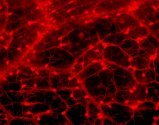
COBRE
Department of Ophthalmology
University of Oklahoma Health Sciences Center
Dean A. McGee Eye Institute
HOME | PI | PJIs | CORES | MENTORS | IAC | EAC | SPOTLIGHT | SEMINARS | CALENDAR | AFFILIATES |
||||||||
ANNOUNCEMENTS |
The COBRE Program will significantly improve and enhance both the quality and quantity of vision-related fundamental research in Oklahoma. This will be accomplished through the mentoring of promising junior investigators by senior faculty. Ther long-term goal is to develop a new generation of NIH-funded independent principal investigators who will continue to expand cutting-edge cell biology, microbiology, immunology, biochemistry, neuroscience, molecular biology, and genetics research in the the vision sciences at participating Oklahoma institutions. We have identified PROMISING JUNIOR INVESTIGATORS, MENTORS, and supportive CORE MODULES at the University of Oklahoma Health Sciences Center and Oklahoma Medical Research Foundation for funding in the initial years of the award. Both the mentors and the PJIs have diverse, complementary scientific backgrounds and areas of expertise, making this application truly multidisciplinary in nature. In addition, we have identified PJI candidates for research projects for future competitive funding at Oklahoma State University, Langston University, the University of Oklahoma-Norman, and the University of Tulsa, and will provide start-up funds for a new vision research faculty member to be recruited by OU-Norman Department of Zoology in the second year of the award. Finally, the COBRE will establish a Scholar-in-Residence program that will provide an opportunity for faculty at other participating institutions to do research in a vision researcher laboratory. The ultimate payoff of this investment will be an enhancement of knowledge and its translation to treatment and prevention of debilitating and blinding eye diseases, which will benefit all of the people in the state, the nation, and the world. Additionally, the nature of the problems under investigation and the eye as a model of disease makes much of the proposed research immediately applicable to more generalized areas including neurodegeneration, cancer, gene therapy, pathogenesis of bacterial infectious diseases, to name only a few. Thus, in addition to intrinsic benefits to vision science, the collateral impact of vision research is substantial. |
|||||||
Please send comments,
questions, or error reports to Holly-Whiteside@ouhsc.edu

Copyright © 2003 The Board of Regents of the University of Oklahoma, All Rights Reserved
University of Oklahoma Disclaimers
Copyright © 2003 The Board of Regents of the University of Oklahoma, All Rights Reserved
University of Oklahoma Disclaimers